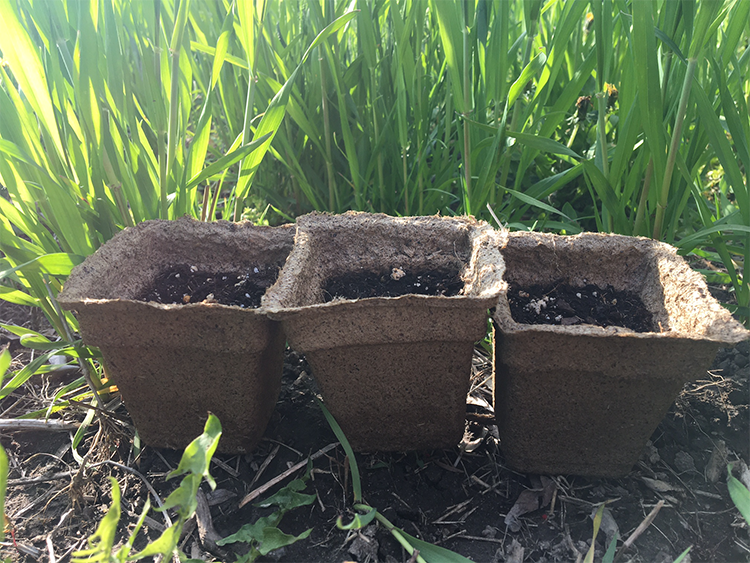
Value-added has become a popular term on many dairies in recent years, and there can be great benefits from turning your own milk into dairy products to sell. However, a farm environment can also be conducive to many other types of additional revenue streams. Attendees at the Professional Dairy Producers of Wisconsin Business Conference heard two entrepreneurs, who have used their dairy farm basis to launch other unique agricultural businesses, discuss what has helped them succeed in both ventures.
Amanda Freund and her family in East Canaan, Conn., are the minds behind CowPots, the biodegradable plant containers made entirely of digested, composted, recycled cow manure fibers. The dairy, which now milks with five automatic milking systems, has used a plug-flow manure digester since 1997. The biogas provides some energy for the farm, and the manure solids are used as bedding for the cows as well as material to be shaped into CowPots.
The idea for CowPots wasn’t developed to bring more money to the farm. “This was initially designed as a way for us to better manage our manure,” Freund said.
But after a lot of experimenting and testing to make sure the pots actually did what they were supposed to — help plants grow while reducing plastic container waste — the business took off. It’s what allowed Freund to come back to the farm after college, and it’s what has spurred even more opportunities as her mom grew their on-farm garden center and produce market, which is powered by CowPots, of course.
Produce is also a focus of the Gladstone family from Bradford, Vt. Once Walt and his wife, Margaret, established their dairy and started milking 120 cows in 1988, they ventured into the wholesale sweet corn business. The market was ripe because, as Gladstone explained, they had a two- to three-week growing advantage over most other farms in the region.
“We didn’t have a lot of extra land during our first 10 years, so we thought we’d diversify until we got more land,” Gladstone said. The business eventually shifted from corn to pumpkins, and today the family’s Newmont Farm grows roughly 200 acres of pumpkins each year in addition to milking 1,600 cows. Most of their pumpkins are sold to farm stands and grocery stores for jack o’lanterns and other decorations, he said.
Keys to diversification
Gladstone shared five things he believes have helped their business grow and succeed. These can certainly be observed in the Freunds’ operation, too, and any farm enterprise.
- High-quality crop (or product). Selling a desirable product is a given. Gladstone said they ensure quality pumpkins by selecting high-performing varieties, managing crop rotations to control disease and weeds, bringing in beehives to maximize pollination, and delivering a clean crop. Freund worked with a number of garden organizations to ensure CowPots was effective in developing plants. Both have been able to expand their market because of customer satisfaction.
- Land basis. The Gladstones’ large, well-drained fields allow them to meet their goal of shipping three to five trailer loads of pumpkins each day during the peak season, Gladstone said. Freund shared how their cow barn, CowPots facility, and greenhouse and market are all near each other to allow each enterprise to work with the others.
- Labor. Just like with any farm business, finding labor can be a struggle. Gladstone said they initially invited community groups to come out and pick pumpkins as fundraisers. Now that the business has grown, they make use of H-2A workers.
- Markets. Both Freund’s and Gladstone’s businesses utilize online tools and build their product’s reputation to expand their market, a much different approach from selling milk. “As dairy farmers, we never had to be responsible for marketing our end product,” Freund said. “Building a brand has been a huge learning curve, and I’d say that’s been the most complicated and challenging part of this whole initiative.”
- Relationships. Developing good rapport with customers, suppliers, and community members is vital to having a business that thrives, the two entrepreneurs emphasized. One way they achieve that is by distributing newsletters to their neighbors about what’s going on at the farm. They also make sure to stay focused on the true purpose of the business. Gladstone said, “We want to grow our market share and who we’re selling to, but not to the point that from a labor and, more importantly, a management viewpoint, we can’t maintain quality.”
At the end of the day, Freund and Gladstone recognize both the value of diversification and their dairy roots. “Our passion is still the cows,” Freund said.








